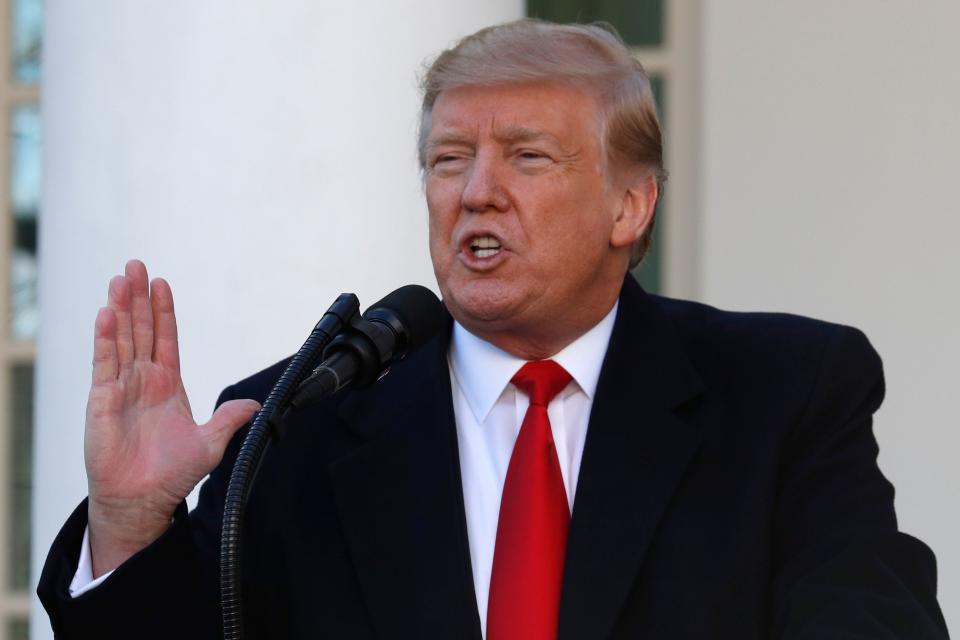Trump shutdown: A $5.7 billion wall downpayment cost $130 billion and we still don't have it
With acceptance of a continuing resolution, President Trump and Congress may have briefly ended a drawn-out standoff about building a $5.7 billion wall along the nation’s southern border. The three-week appropriations bill will reopen the government and open a short window of time to resolve the wall-funding issue.
Until now, House Democrats would not talk money as long as the government was closed. And Trump wouldn’t budge on reopening government unless he got the wall he promised when running for office. Yet after five long weeks, the partial government shutdown — which seriously affected 800,000 federal workers — took a meaningful bite out of GDP growth.
According to Chairman of the Council of Economic Advisers Kevin Hassett, some 0.13 percentage points was subtracted from growth for each week while the shutdown lasted. Five weeks means GDP growth is down by 0.65 percentage points, with more taken away each day. For a $20 trillion-plus economy, that’s $130 billion dollars on an annual basis.
This seems like a lot to pay to get a $5.7 billion wall along with other security-related initiatives along the U.S.-Mexican border.
Since individuals do not get billed directly when GDP growth falls, the loss is both everyone’s and no one’s in particular. Maybe that’s why a running tally of the GDP penalty doesn’t even make the evening news. We got frequent updates on the number of days and hours (and sometimes minutes) the government was closed, but no news on the ongoing cost.

Yet the government workers and contractors who missed paydays still got a bill in the form of an empty envelope that used to contain a paycheck. The cost was definitely not theoretical for them.
By finding temporary work, borrowing from friendly lenders, and making visits to local pawn shops, those forced out of work somehow found ways to pay the family’s bills. They deserve and get our attention. We don’t seem to worry much about GDP — which after all is an abstract concept — but understandably focus on stories of real people who are struggling to make ends meet while hoping to be called back to work.
More shutdown commentary: Trump holds US hostage to border wall it doesn't support. That's extortion, not leadership
Shutdown consequences: We're not paying our protectors while ISIS al-Qaeda remain a threat
Shutdown drama: Trump & Pelosi's alpha-dog posturing only benefits payday lenders & Putin
As indicated by Kevin Hassett, when government workers are back on the job, they’ll receive the pay they missed, and those extra-large paychecks will boost GDP growth, admittedly compensating in part for the shut-down losses. But the affected workers won’t be reimbursed for the inconvenience they sustained while living on less or in some cases having to work for no pay. And while GDP growth will recover somewhat, it will not be made whole again. Much government production simply stops during a shutdown, and the services that government would have provided cannot be fully replaced.
Patents that may have been issued 35 days earlier by the U.S. Patent Office will arrive, but without making up for lost time and economic activity. Merger approvals that might have been accomplished by the Federal Trade Commission may get done as work resumes, but the newly approved entity will not receive an extra shot of capital to make up for the lost time and revenue. The same can be said about the pending passports and related vacations that were cancelled, EPA construction permits and the affected factories, schools and hospitals that started late, FDA drug approvals, national park camping trips, flights delayed due to missing air traffic controllers and reports on inflation from the Bureau of Labor Statistics.
Yes, the wheels of government will turn again, and GDP growth will resume. But because delays are costly and time is money, there will be no back pay for much of the lost growth caused by the extended shutdown.
The shutdown lasted some five weeks. Every week added another $26 billion to the bill. And all of this, we’re told, is about a $5.7 billion construction projection. If, after a brief pause or negotiations, the wall struggle shutdown continues, the GDP loss could be large enough to push the economy to the edge of a recession.
There must be something wrong with this picture. There has to be a better way to govern.
Bruce Yandle is a distinguished adjunct fellow with the Mercatus Center at George Mason University and dean emeritus of the Clemson University College of Business and Behavioral Science.
You can read diverse opinions from our Board of Contributors and other writers on the Opinion front page, on Twitter @USATODAYOpinion and in our daily Opinion newsletter. To respond to a column, submit a comment to letters@usatoday.com.
This article originally appeared on USA TODAY: Trump shutdown: A $5.7 billion wall downpayment cost $130 billion and we still don't have it

